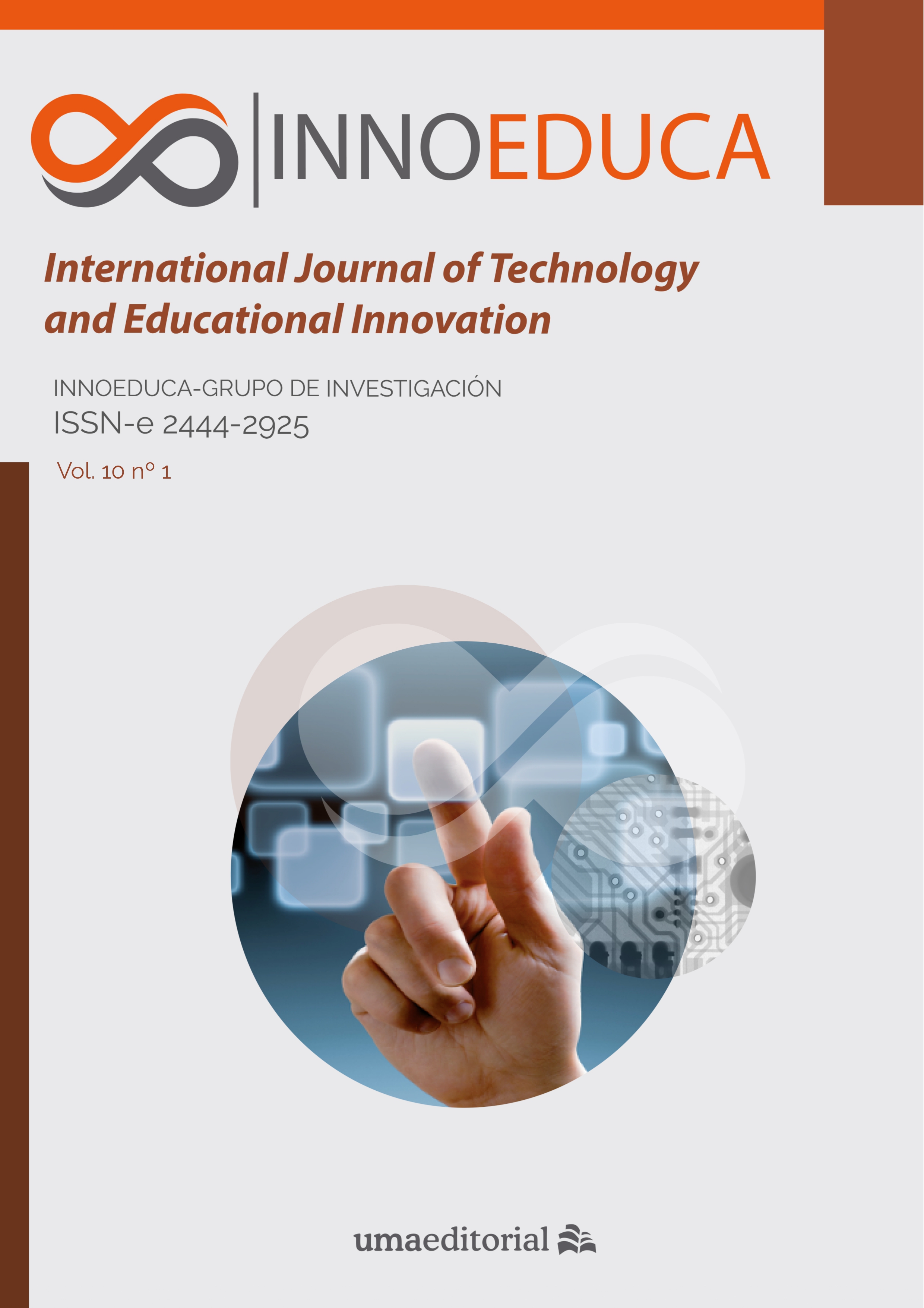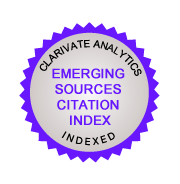Kyrgyz Students’ Acceptance of QR Code Use in Organic Chemistry Course
DOI:
https://doi.org/10.24310/ijtei.101.2024.17747Keywords:
Instructional videos, Organic chemistry, QR code, Technology acceptanceAbstract
Science disciplines require a deeper study of theoretical material by performing laboratory work, which includes performing experiments. In this regard, it will be useful to actively introduce new technologies into the educational process. In this study, QR codes were integrated into the Organic Chemistry Course textbook to direct university and high school students to the appropriate videos about the experiments. In this respect, this study aimed to analyze university and high school students` acceptance of the QR code technology used in the "Organic Chemistry" course. This research model is based on the Technology Acceptance Model (TAM) and the Unified Theory of Acceptance and Use of Technology2 (UTAUT2). Hence, the study included perceived playfulness, social influence, facilitating conditions, hedonic motivation, perceived ease of use, perceived usefulness, behavioral intention, and attitude as the major antecedents of students’ acceptance of QR codes. In total, 204 Kyrgyz students in university and high school level participated in this study. Partial Least Squares Structural Equation Modeling (PLS-SEM) analysis was applied to analyze the effects of factors on students’ acceptance of QR codes. The study revealed that facilitating conditions, hedonic motivation, social influence, perceived ease of use, and perceived usefulness are the significant factors towards students` acceptance of QR code use in Organic Chemistry course.
Downloads
Metrics
Publication Facts
Reviewer profiles N/A
Author statements
Indexed in
-
—
- Academic society
- N/A
- Publisher
- Universidad de Málaga
References
Abdul Rabu, S. N., Hussin, H., & Bervell, B. (2019). QR code utilization in a large classroom: Higher education students’ initial perceptions. Education and Information Technologies, 24(1), 359–384. https://doi.org/10.1007/s10639-018-9779-2
Afacan, G., & Çinar, M. (2021). The Acceptance and Use of an Online Exam System by Online Learners: Implementation of the UTAUT Model. Sakarya University Journal of Education, 11(3), 412-430. https://doi.org/10.19126/suje.830529
Al-Azawei, A., & Alowayr, A. (2020). Predicting the intention to use and hedonic motivation for mobile learning: A comparative study in two Middle Eastern countries. Technology in Society, 62, 1-12. https://doi.org/10.1016/j.techsoc.2020.101325
Ali, N., Santos, I. M., & Areepattamannil, S. (2017). Pre-service teachers' perception of quick response (QR) code integration in classroom activities. Turkish Online Journal of Educational Technology-TOJET, 16(1), 93-100.
Al Mansoori, K. A., Sarabdeen, J., & Tchantchane, A. L. (2018). Investigating Emirati citizens’ adoption of e-government services in Abu Dhabi using modified UTAUT model. Information Technology & People, 31(2), 455-481. https://doi.org/10.1108/ITP-12-2016-0290
Artemova, E., S. Shishalova, Y., Melnikov3, S., Orekhova, O., & Nikiporets-Takigawa, G. (2021). El Uso de Códigos QR y su eficacia en la Aplicación de competencias profesionales. Apuntes Universitarios, 12(1), 419-435. https://doi.org/10.17162/au.v12i1.978
Carter, L., & Bélanger, F. (2005). The utilization of e‐government services: citizen trust, innovation and acceptance factors. Information Systems Journal, 15(1), 5-25. https://doi.org/10.1111/j.1365-2575.2005.00183.x
Chang, C. T., Hajiyev, J., & Su, C. R. (2017). Examining the students’ behavioral intention to use e-learning in Azerbaijan? The general extended technology acceptance model for e-learning approach. Computers & Education, 111, 128-143. https://doi.org/10.1016/j.compedu.2017.04.010
Chooi, W. J., Chooi, W. Y., Lee, S. H., Ng, S. K., & Ng, W. S. (2014). Determinants affecting behavioral intention of using QR codes as a learning tool (Doctoral dissertation, Universiti Tunku Abdul Rahman). UTAR. http://eprints.utar.edu.my/1413/
Chyou, J. J. T., Kang, H. C., & Cheng, B. Y. F. (2012). Acceptance Of Qr Code In Taiwan: An Extension Of The Technology Acceptance Model. PACIS 2012 Proceedings. 12. https://aisel.aisnet.org/pacis2012/12
Davis, F. D. (1989). Perceived usefulness, perceived ease of use and use acceptance of information technology. MIS Quarterly, 13(3), 319–339.
Del Rosario-Raymundo, M. R. (2017). QR codes as mobile learning tools for labor room nurses at the San Pablo Colleges Medical Center. Interactive Technology and Smart Education, 14(2), 138-158. https://doi.org/10.1108/ITSE-02-2017-0015
Durak, G., Ozkeskin, E. E., & Ataizi, M. (2016). QR codes in education and communication. Turkish Online Journal of Distance Education, 17(2), 42-58.
El-Gayar, O., Moran, M., & Hawkes, M. (2011). Students' acceptance of tablet PCs and implications for educational institutions. Journal of Educational Technology & Society, 14(2), 58-70.
Escobar-Rodríguez, T., Carvajal-Trujillo, E., & Monge-Lozano, P. (2014). Factors that influence the perceived advantages and relevance of Facebook as a learning tool: An extension of the UTAUT. Australasian Journal of Educational Technology, 30(2), 136-151. https://doi.org/10.14742/ajet.585
Fornell, C., & Larcker, D. F. (1981). Evaluating structural equation models with unobservable variables and measurement error. Journal of Marketing Research, 18(1), 39-50. https://doi.org/10.1177/00222437810180010
Gao, B. (2023). Understanding smart education continuance intention in a delayed benefit context: An integration of sensory stimuli, UTAUT, and flow theory. Acta Psychologica, 234, 1-13. https://doi.org/10.1016/j.actpsy.2023.103856
González-Rosende, M. E., Bueso-Bordils, J. I., Castillo, E., Martínez-Solís, I., & Murgui-Martínez, J. M. (2020, March 2-4). QR codes for blended learning in organic chemistry lab classes and Pharmaceutical Botany Workshops: A study case. INTED Proceedings. 14th International Technology, Education and Development Conference. Valencia, España. https://doi.org/10.21125/inted.2020.0572
Hair, J. F., Hult, G. T. M., Ringle, C. M., & Sarstedt, M. (2017). A primer on partial least squares structural equation modeling (2nd ed.). Sage.
Ifenthaler, D., & Schweinbenz, V. (2016). Students' acceptance of tablet PCs in the classroom. Journal of Research on Technology in Education, 48(4), 306-321. https://doi.org/10.1080/15391523.2016.1215172
Iskandar, M., Hartoyo, H., & Hermadi, I. (2020). Analysis of factors affecting behavioral intention and use of behavioral of mobile banking using unified theory of acceptance and use of technology 2 model approach. International Review of Management and Marketing, 10(2), 41-49. https://doi.org/10.32479/irmm.9292
Jameel, A. S., Abdalla, S. N., & Karem, M. A. (2020, November). Behavioural Intention to Use E-Learning from student's perspective during COVID-19 Pandemic. In 2020 2nd Annual international conference on information and sciences (AiCIS) (pp. 165-171). IEEE.
Karia, C. T., Hughes, A., & Carr, S. (2019). Uses of quick response codes in healthcare education: a scoping review. BMC Medical Education, 19(1), 1-14. https://doi.org/10.1186/s12909-019-1876-4
Karahan, E., & Bilici, S. C. (2017). Use of QR codes in science education: Science teachers' opinions and suggestions. Necatibey Faculty of Education Electronic Journal of Science & Mathematics Education, 11(1), 433-457.
Kline, P. (1999). The handbook of psychological testing (2nd ed.). Routledge
Mei-Ying, W., Pei-Yuan, Y., & Weng, Y. C. (2012). A study on user behavior for i pass by UTAUT: Using taiwan's MRT as an example. Asia Pacific Management Review, 17(1), 91-111.
Mileva, N., & Stoyanova, D. (2017, November 16-18). A methodological approach for using QR codes in Education. ICERI Proceedings. 10th annual International Conference of Education, Research and Innovation. Sevilla, España. https://doi.org/10.21125/iceri.2017.2296
Moorthy, M. K., Jing, C. W., Yue, C. W., Siewhwa, L., SokKuan, N., & Shin, N. W. (2014). Determinants affecting behavioural intention of using QR codes as a learning tool. International Journal of Physical and Social Sciences, 4(12), 54-73.
Nair, I., & Das, V. M. (2012). Using Technology Acceptance Model to assess teachers’ attitude towards use of technology as teaching tool: A SEM Approach. International Journal of Computer Applications, 42(2), 1-6.
Nazar, M., Nurmalahayati, N., Rusman, R., Puspita, K., & Haris, A. (2022). Introducing Chemical Instruments through Quick Response Code (QR-Code) Based Website. Jurnal Penelitian Pendidikan IPA, 8(3), 1083-1088. https://doi.org/10.29303/jppipa.v8i3.1361
Nikolopoulou, K., Gialamas, V., & Lavidas, K. (2021). Habit, hedonic motivation, performance expectancy and technological pedagogical knowledge affect teachers’ intention to use mobile internet. Computers and Education Open, 2, e100041. https://doi.org/10.1016/j.caeo.2021.100041
Onyekwere, J., & Enamul Hoque, K. (2023). Relationship between technological change, digitization, and students’ attitudes toward distance learning in Lagos Higher Education institutes. Innoeduca. International Journal of Technology and Educational Innovation, 9(1), 126–142. https://doi.org/10.24310/innoeduca.2023.v9i1.15286
Pastor, G. C., Sánchez-Adsuar, M. D., & Miguel, J. (2015, June). Proposal of QR Codes Implementation in Teaching Methodology. ICERI Proceedings. 10th annual International Conference of Education, Research and Innovation. Sevilla, España.
Sayginer, C. (2023). Acceptance and use of cloud-based virtual platforms by higher education vocational school students: application of the UTAUT model with a PLS-SEM approach. Innoeduca. International Journal of Technology and Educational Innovation, 9(2), 24–38. https://doi.org/10.24310/innoeduca.2023.v9i2.15647
Schulz, E. V., & Ottolini, K. M. (2023). Teaching with QR codes: Accessible technology for the novice educator. eLearn, 2023(2 Special Issue), art.6. https://doi.org/10.1145/3583062.3566130
Shanmugam, A., Savarimuthu, M. T., & Wen, T. C. (2014). Factors affecting Malaysian behavioral intention to use mobile banking with mediating effects of attitude. Academic Research International, 5(2), 236-253.
Sultanov, A. (2023, November 18). Kyrgyzstan ranked 15th in world in terms of Internet cost -. 24.Kg. https://24.kg/english/280086_Kyrgyzstan_ranked_15th_in_world_in_terms_of_Internet_cost/
Situmoranga, R., Siangb, J. L., Ibrahimc, N., & Lagunsiangd, J. (2019). Development of collaborative learning materials based on QR code to facilitate learning. Development, 8(6), 85-98.
Sukendro, S., Habibi, A., Khaeruddin, K., Indrayana, B., Syahruddin, S., Makadada, F. A., & Hakim, H. (2020). Using an extended Technology Acceptance Model to understand students’ use of e-learning during Covid-19: Indonesian sport science education context. Heliyon, 6(11), e05410. https://doi.org/10.1016/j.heliyon.2020.e05410
Şimşek, A. S., & Ateş, H. (2022). The extended technology acceptance model for Web 2.0 technologies in teaching. Innoeduca. International Journal of Technology and Educational Innovation, 8(2), 165–183. https://doi.org/10.24310/innoeduca.2022.v8i2.15413
Taherdoost, H. (2016). Sampling methods in research methodology; How to choose a sampling technique for research. International Journal of Academic Research in Management (IJARM), 5(2), 18-27. http://dx.doi.org/10.2139/ssrn.3205035
Tamilmani, K., Rana, N. P., Prakasam, N., & Dwivedi, Y. K. (2019). The battle of Brain vs. Heart: A literature review and meta-analysis of “hedonic motivation” use in UTAUT2. International Journal of Information Management, 46, 222-235. https://doi.org/10.1016/j.ijinfomgt.2019.01.008
Tan, F. B., & Chou, J. P. (2008). The relationship between mobile service quality, perceived technology compatibility, and users' perceived playfulness in the context of mobile information and entertainment services. Intl. Journal of Human–Computer Interaction, 24(7), 649-671. https://doi.org/10.1080/10447310802335581
Thompson, R. L., Higgins, C. A., & Howell, J. M. (1991). Personal computing: Toward a conceptual model of utilization. MIS Quarterly, 15(1), 125-143. https://doi.org/10.2307/249443
Triandis, H. C. (1980). Values, attitudes, and interpersonal behavior. In H. Howe, & M. Page (Eds.), Nebraska symposium on motivation (V. 27, pp. 195–259). University of Nebraska Press.
Trochim, W. M. K. (n.d.). Research Methods Knowledge Base. https://conjointly.com/kb/
Twum, K. K., Ofori, D., Keney, G., & Korang-Yeboah, B. (2022). Using the UTAUT, personal innovativeness and perceived financial cost to examine student’s intention to use E-learning. Journal of Science and Technology Policy Management, 13(3), 713-737. https://doi.org/10.1108/JSTPM-12-2020-0168
Uçak, E. (2019). Teaching materials developed using QR code technology in science classes. International Journal of Progressive Education, 15(4), 215-228.
Venkatesh, V., Morris, M. G., Davis, G. B., & Davis, F. D. (2003). User acceptance of information technology: Toward a unified view. MIS Quarterly, 27(3), 425–478. https://doi.org/10.2307/30036540
Venkatesh, V., Thong, J. Y., & Xu, X. (2012). Consumer acceptance and use of information technology: extending the unified theory of acceptance and use of technology. MIS Quarterly, 36(1), 157-178. https://doi.org/10.2307/41410412
Yang, H. D., & Choi, I. (2001). Revisiting technology acceptance model with social influence factors. PACIS 2001 proceedings, 35. https://acortar.link/w17enR
Published
How to Cite
Issue
Section
License
Copyright (c) 2024 Innoeduca. International Journal of Technology and Educational Innovation

This work is licensed under a Creative Commons Attribution-NonCommercial-NoDerivatives 4.0 International License.
All contents published by Innoeduca. International Journal of Technology and Educational Innovation are subject to Creative Commons Attribution-Nocomercial-NoDerivatives 4.0 International License, whose complete text can be consulted at https://creativecommons.org/licenses/by-nc-nd/4.0/legalcode. Thus, copying, distribution, public communication, derivative works and commercial use of content are permitted as of the aforementioned issue provided that the source and the author of the text are cited.
It is the responsibility of the authors to obtain the necessary permits for images that are subject to copyright.

This work is licensed under a Creative Commons Attribution-NonCommercial-NoDerivatives 4.0 International License.













242.png)








